Acrylic putty: selection criteria

Repair work almost always involves the use of plasters and putties. Acrylic is in rather high demand, the selection criteria of which and the main properties will be discussed here.

Peculiarities
The putty is made on the basis of acrylic polymers, has increased plasticity and ductility. It has several varieties, it can be used for both interior and exterior work. There is a universal putty of this type, which is suitable for finishing work in an apartment, for exterior decoration of house facades and window openings.

Sold in packages:
- in the form of a free-flowing mixture that needs to be diluted with water before use;
- in a ready-to-use form.


Acrylic putty is used as a topcoat for monolithic leveling of walls or ceilings, for sealing small voids, mother-in-law of various sizes. It withstands sharp temperature changes well, has a high resistance to moisture, plasticity, and has a low vapor permeability.
In work, it is very light, evenly distributed over the surface, does not have any unpleasant odor, and dries quickly enough. Several thin layers can be successively applied on top of each other, which allows you to get a perfectly flat and smooth surface. After drying, the polymer coating does not crack, does not shrink, and does not erode during surface application of water dispersion paints. It lends itself to painting and processing with varnishes of almost all types.


Disadvantages:
- some types, when creating a layer over 7 mm, shrink, crack, therefore, for thick layers, putty is carried out in two or three stages - first, a rough layer is created, and then several finishing ones;
- sanding produces poisonous dust, therefore eye and respiratory protection methods are required.
- fine dispersion is ideal for a smooth surface, but creates great sanding problems by quickly clogging the sandpaper.

Classic color choices are white and gray. Textured options have appeared that imitate various types of textures, for example, wood.
The composition can be applied to surfaces:
- concrete;
- brick;
- metal;
- already plastered surfaces;


- wood (furniture, doors, floor, panels, ceiling);
- drywall, fiberboard, chipboard;
- old paint coatings, non-absorbent layers of glossy paints;
- glass-magnesium surfaces;
- fiber cement boards, gypsum.

This makes acrylic filler a truly versatile polymer finishing material.
Types and composition
Despite the similar technical characteristics, differences in composition make all types of acrylic putty individual.


- Acrylic-based water dispersion - goes on sale in a ready-to-use form. It contains: water, acrylic base, dry filler. It is used for priming, filling walls and finishing facades. Suitable for use on all surfaces. Moisture resistant, suitable for finishing work in rooms with high humidity.
- Oil - also sold off-the-shelf. It differs from ordinary acrylic putty in a richer composition and a wide range of applications. The main ingredients are drying oil, acrylate, water, hardener, filler, plasticizer, coloring pigments. Has excellent technical characteristics.Depending on the manufacturer, it can be waterproof, fireproof, anti-corrosion.


- Latex - has a wide range of applications. There are several varieties: basic, finishing and intermediate. Latex putty has very good thermal conductivity, therefore it is often used for interior decoration. It contains silicone, acrylic base, water, hardeners, coloring agents.
- Acrylate - can be used inside and outside buildings, ideal for sealing joints between plasterboard panels. Consists of acrylic base, water, hardener and thickener. It is sold both dry and ready-made. It has excellent quality characteristics, it is frost-resistant and with increased moisture resistance.

Manufacturers
Acrylic putty of all varieties is presented on store shelves in a wide range under the brand name of various brands. It is quite difficult not to get confused in such an abundance of proposals, especially for an uninformed person. A brief overview of the most famous manufacturers will allow you to quickly navigate the store and make the right choice:
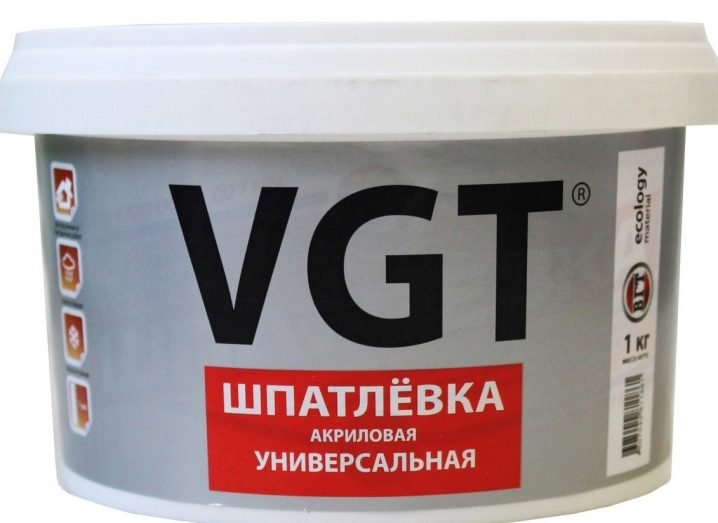
- VGT - a domestic manufacturer specializing in the manufacture of universal acrylic putty, also narrow-profile, for specific conditions. The range includes ready-to-use solutions that can be used to finish almost any surface. The acrylic topcoat from this manufacturer cannot be used in wet conditions.
- PARADE - offers three types of acrylic compounds: finishing standard coating, moisture resistant, exclusive putty for working with wooden surfaces. All types of finishing materials are sold at an affordable price, have excellent quality characteristics, and are economical in consumption.

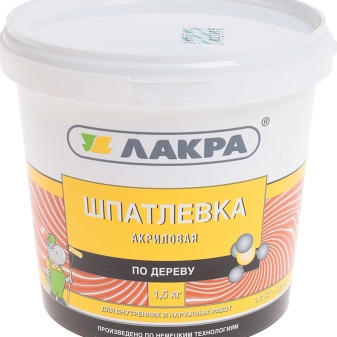
- LLC "Stroytorg +" - is engaged in the manufacture and sale of plaster under the name "Lakra". It is a high quality universal acrylic putty. It has unique technical characteristics and long shelf life. It has proved itself to be excellent for sealing joints, including with the use of reinforcing meshes. It is sold in almost every hardware store and at an affordable price.
- World famous Kaizer brand, markets a topcoat called Acryl-Spachtel OSB. For its manufacture, he uses only high-quality and modern ingredients, the production process is carried out on modern equipment, which allows you to create a high-quality and versatile putty for finishing any kind of finishing work.

Each of these manufacturers is constantly expanding the range of produced finishing materials.
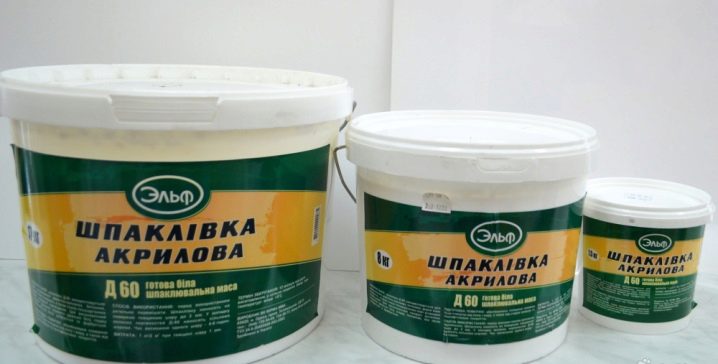
Selection Tips
The correct choice of the most suitable acrylic putty for the job is the main guarantee of an excellent and quick implementation of all finishing activities.
It is very important to use the advice of experienced craftsmen:
- If the putty will be applied to another coating, such as a primer, then these two products should be selected from the same manufacturer.
- Be sure to study the recommendations on the packaging about the conditions and scope of use of acrylic plaster. Violation of the recommendations will lead to disastrous results.
- If, after applying the putty, the walls will be painted, then it is better to give preference to ready-to-use solutions. Under the wallpaper, dry mixes will be the best choice.
- When purchasing a product, even from a well-known manufacturer, you need to open the lid and visually evaluate the contents of the container. The mixture should not contain any large excess inclusions or foreign odors.

- If the putty is to be used in high humidity conditions, the packaging must contain information about the admissibility of such use. Otherwise, a natural rework awaits you.
- It is necessary to take into account the purpose of the topcoat: for use inside a building or facade work. If you need two types of putty, it is better not to purchase two types, but buy one - universal.
- It is worth buying a product in which the recommendations for use are as close as possible to the standards for the operation of your premises.
- It is better to give preference to acrylic putty from well-known manufacturers.

Following these simple tips will help you choose really high-quality products as quickly and easily as possible.
How to putty?
Before starting finishing work, it is necessary to prepare the premises, purchase the necessary materials. Before buying, you should calculate the consumption of the mixture that will be needed for the repair.

Consumption
To begin with, the volume of the putty mixture is calculated per 1 sq. m. The resulting value is multiplied by the area of the entire surface allotted for alignment. The result will vary depending on how many layers of putty will be applied per square meter and on which work surface.
So the foam can be putty with less plaster than is needed to level the concrete floor. It is also necessary to take into account the type of putty, since the facade is consumed faster than the universal or intended for internal work.
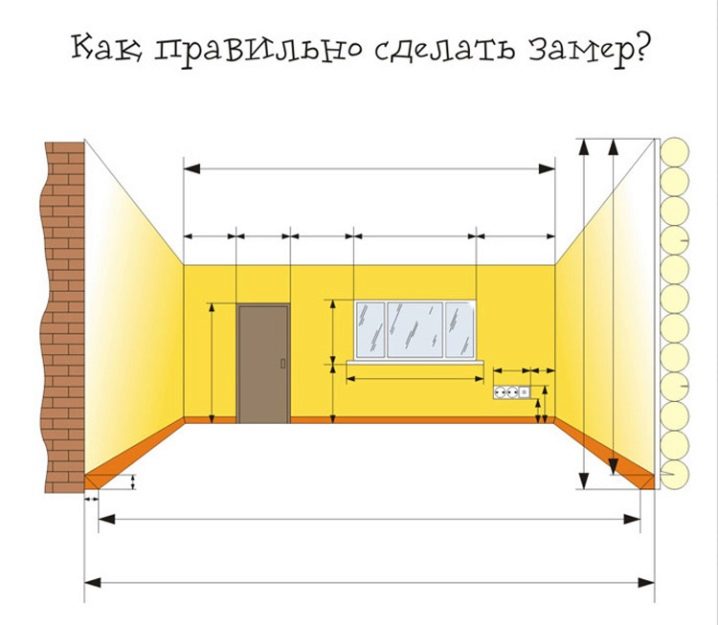
There are average consumption rates for acrylic putty. For plastering a concrete floor, an average of 60 kg of mixture per 100 sq. m. For finishing work on the facade - already about 70 kg for the same area. The smallest consumption when carrying out finishing work on the ceiling inside the room is about 45 kg per 1 sq. m.
The amount of consumption is also influenced by the existing defects of the working surface, their number, the amount of work to be done and the correctly selected putty based on acrylic polymers.

Application technology
You need to start with preparation. The putty must be diluted with water in accordance with the instructions, ready-mixed thoroughly. Free the surface of the working area from dust, dirt, debris and remnants of past paint. If necessary, first apply a primer and only after it has dried, you can start leveling the walls.
The putty should be applied with a medium sized special trowel. It is better to use a small amount of the mixture at a time, adding a new batch if necessary. Using the rules, you should regulate the same layer thickness in different parts of it.


After applying the first base coat, the work area needs rest. It dries for about a day. After this time, the entire putty surface is rubbed with a soft roller or a special float. If, after grouting, still small defects are visible on it, another, but thinner layer of acrylic plaster should be applied, wait again to dry and rub the surface again.
If the defects on the working surface are too large, then before using the putty, it is better to additionally apply not only a primer, but also plaster. So the consumption of the solution will be reduced, and the working surface itself will be better prepared.
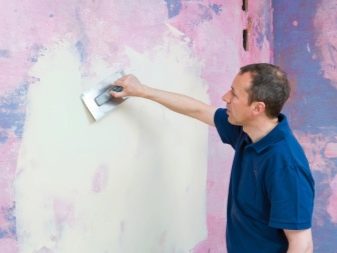

Acrylic putty of all types is a simple and easy-to-use finishing material. It does not require any special skills or tools. All that is needed is to consistently and slowly perform all stages of the work.

Reviews
Acrylic putty has gained wide recognition, both among professional builders and ordinary citizens who use it to make repairs in their homes.
Experienced finishing masters say that the plaster really is of high quality, is very economically consumed, can be used to work on almost any surface and in almost any conditions. A big plus, according to them, is the fact that a surface plastered with an acrylic mixture can be further covered with almost any finishing compound.

Regular buyers note the simplicity and ease of use of acrylic plaster, as well as the excellent end result. A big plus for many is the wide range of this finishing polymer finishing coating. This makes it possible to purchase a putty that fully meets all the requirements.

All about the finishing acrylic putty Triora, see the next video.













The comment was sent successfully.